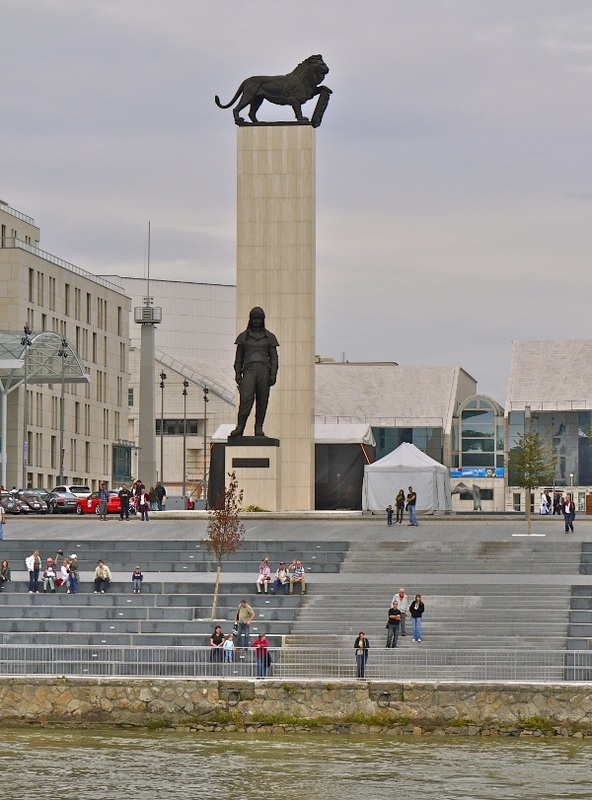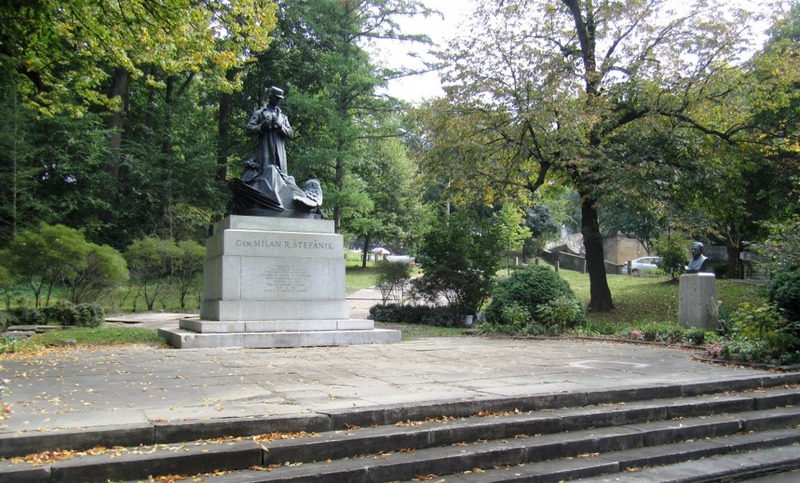Milan R. Stefanik Statue
Finding a New Home for a Slovak Cultural Hero

In years past, when you traveled Martin Luther King Jr. Drive to the Cleveland Museum of Art, you likely noticed the formidable-looking bronze statue towering over the road's intersection with Jeptha Drive, the little road that takes you up to the Museum parking lot. The statue was erected as a memorial to Milan R. Stefanik, Slovakia's greatest and most treasured national hero. It had been a featured monument in Wade Park for nearly 90 years and was a source of pride for Cleveland's Slovak community. However, on your next trip to University Circle, don't going searching for this statue in Wade Park. It's no longer there. As a result of extensive road and sewer construction work in Wade Park, the statute was removed in 2013 from its site at this intersection and, in a somewhat controversial move, eventually relocated to to the Slovak Cultural Garden, down the road in Rockefeller Park.
It's easy to understand why the memory of Milan Stefanik is so treasured by Cleveland's Slovak-American community and why even after 90 years moving his statue to a new location created some controversy in this ethnic community. Stefanik, son of a Lutheran minister, was born in 1880 in a village in what is today western Slovakia. In his youth, he was a brilliant student. He attended Charles University in Prague where he earned a PhD in Philosophy. In 1904, he immigrated to France where in the space of a decade he achieved an international reputation as a Renaissance man who excelled in a number of different fields of scientific endeavor. In 1914, when World War I broke out in Europe, Stefanik joined the French Army becoming a military pilot, flying missions against Axis forces in Europe. Within a short time, he was promoted to the rank of general. In addition to his military duties, he traveled extensively in Europe and in the United States with future first president Tomas Masaryk and others lobbying for the creation of Czechoslovakia. After the war ended, Stefanik was returning to the new republic in May 1919 to become its first minister of defense, when the plane he was piloting--just after it had crossed over the border into Czechoslovak airspace, mysteriously crashed, killing him.
Within months of Stefanik's death, Cleveland's Slovak community undertook plans to have a statue sculpted in his honor. It was not an easy project to complete. Slovak-American leaders in New York and in other U.S. cities argued that the statue should be sited in a more important venue, Washington, D.C. Back in Cleveland, some members of City Council wanted the statue to be located in a park in Garfield Heights. Cleveland's Slovak community, however, led by ethnic journalist and civic leader, John Pankuch, was persistent and succeeded in 1924 in erecting the statue in Wade Park--where, according to Pankuch, it would be visible to thousands of members of the general public who "would pass by [it] every hour."
In 1929, just five years after the statue was placed in Wade Park, a proposal was made to move it to the new Slovak Cultural Garden that was being planned in Rockefeller Park. Drawings were made, footers were laid, and preliminary work to raise the statue off its pedestal was started. But then John Pankuch and others stepped in and persuaded the Slovak community to keep the statute in Wade Park where it remained ever since until its relocation in 2013. Now as the centerpiece of the Slovak Cultural Garden, the Milan R. Stefanik statue sits on a pedestal that was built upon the same footers that the Slovak Civic League had poured for it in the early 1930s. It is situated between the busts and pedestals of two other Slovak cultural heroes, poet Jan Kollar and Stephen Furdek, the father of American Slavs. While, as noted, this move was not without controversy, many in the Slovak community shrug it off and say that the statue has simply finally come home.
Images











